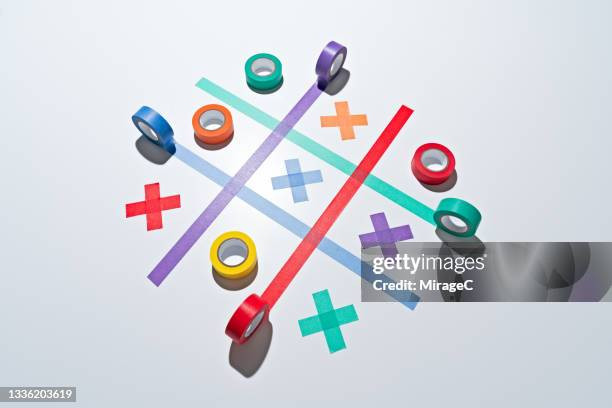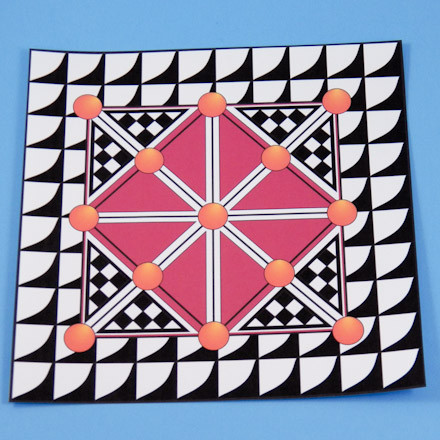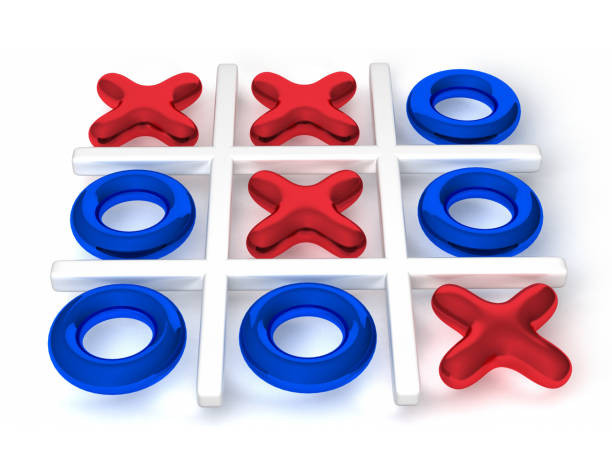Tic Tac Toe Variations Around the World
Tic Tac Toe, also known as Noughts and Crosses or Xs and Os, is a universally known game. Despite its simplicity, this game has undergone fascinating transformations around the world. From ancient tribes to tech-savvy programmers, cultures have evolved and enriched this humble 3X3 grid into unique experiences that challenge logic, enhance creativity, and reflect local traditions.

1. Tic Tac Toe (Finland)
Tic Tac Toe is a hybrid of physical sport and strategic thinking. it is an outdoor pin-throwing game, and in this variant, players throw numbered pins to choose which Tic Tac Toe cell they claim. It's popular in summer festivals in Finland and promotes both physical activity and grid awareness.
More than just a twist, this version teaches kids coordination and strategic planning. It's used in schools as an educational tool, enhancing motor skills and number recognition.
2. Picaria (Zuni and Pueblo Tribes, USA)
Picaria is played on a 3x3 or 4x4 board with diagonal lines. Unlike traditional Tic Tac Toe, it has two phases: placing and moving. Once all pieces are placed, players slide them into new positions, trying to make a line of three. This adds an extra dimension of foresight and memory.
Picaria is centuries old and reflects Indigenous values of balance, patience, and tactical movement. It's also a beautiful example of cultural preservation through games.

3. Number Tic Tac Toe (Mathematics Edition)
In this version, players fill the grid with odd or even numbers from 1 to 9. The goal is to make rows that add up to 15. Every combination that adds to 15 is also a magic square pattern.
This game is excellent in classrooms, helping students grasp arithmetic, logical sequences, and critical thinking. It's often used in STEM programs to combine fun with mental exercises.
4. 3D Tic Tac Toe
This version stacks three or four 3X3 boards on top of one another. To win, you must form a line in three-dimensional space, which could go vertically, diagonally, or across levels.
3D Tic Tac Toe increases the complexity dramatically. It teaches spatial reasoning and abstract visualization. In competitions, it's considered a mental gym for those who want to push beyond the 2D plane.

5. Gomoku (Japan and China)
Gomoku, also called Five in a Row, is played on a 19X19 Go board with black and white stones. The goal is to get five in a row, horizontally, vertically, or diagonally.
While more complex than Tic Tac Toe, its mechanics are similar. Gomoku has AI tournaments and global championships. Players require serious skill, as it's possible to trap an opponent multiple moves in advance.
6. Quantum Tic Tac Toe
Inspired by quantum mechanics, this game allows moves to exist in a superposition. You mark multiple possibilities, and they only collapse into a final state when a cycle forms.
This modern version teaches basic quantum concepts and is used in high school and university-level physics discussions. It's chaotic, complex, and surprisingly philosophical-fitting the quantum world.

7. Wild Variants from Around the World
- Misere Tic Tac Toe: The goal is to not get three in a row. Reverse psychology and strategic confusion reign.
- Ultimate Tic Tac Toe: Each square in the main board contains a mini board. Winning a mini board gives you control over the larger grid.
- Human Tic Tac Toe: Played in schools and parties with people standing in grid positions. Great for engagement and ice-breaking.
- Tic Tac Toad: A version in mobile gaming where frogs replace Xs and Os, adding animated fun and sound.
8. Educational Use of Variants
Teachers around the world are integrating these Tic Tac Toe variants to help students understand mathematics, logic, coding principles, and even quantum theory. In India, for example, Number Tic Tac Toe is used in math olympiad training. In Finland, Molkky Tic Tac Toe encourages outdoor learning.
These games are also being embedded in educational apps and software platforms for children with learning disabilities to improve focus, recognition, and coordination.
9. Digital Evolution: Tic Tac Toe in the Modern Age
Modern versions of Tic Tac Toe exist in video games, AI platforms, mobile apps, and even blockchain environments. Bots using algorithms like Minimax or Alpha-Beta Pruning now dominate platforms like Python-based coding sites.
With the emergence of augmented reality (AR) and virtual reality (VR), interactive Tic Tac Toe experiences are being developed, where users can place holographic marks in 3D space.
10. Cultural Reflection in Game Design
Each version of Tic Tac Toe represents its local culture's mindset. Picaria emphasizes patience and strategy. Quantum Tic Tac Toe reflects curiosity and modern physics. Molkky combines sport with logic, echoing Finnish love for nature and education. Gomoku reflects Eastern discipline and balance.
Studying these games gives us a lens into how cultures shape gameplay to suit their values, lifestyle, and environment. It's a reminder that even a simple game can evolve to mirror the people who play it.
Conclusion: A Global Game With Infinite Faces
Tic Tac Toe has come a long way from its chalkboard days. Its global variations prove that simplicity can inspire innovation. Whether you're playing to learn, compete, or connect across generations, there's a version of Tic Tac Toe waiting for you.
Next time you draw a grid, challenge yourself. Try a new twist. Whether it's quantum, cultural, educational, or digital-this humble game has infinite possibilities.
What's your favorite variation? Share with us on our Contact Page!
Back to Game